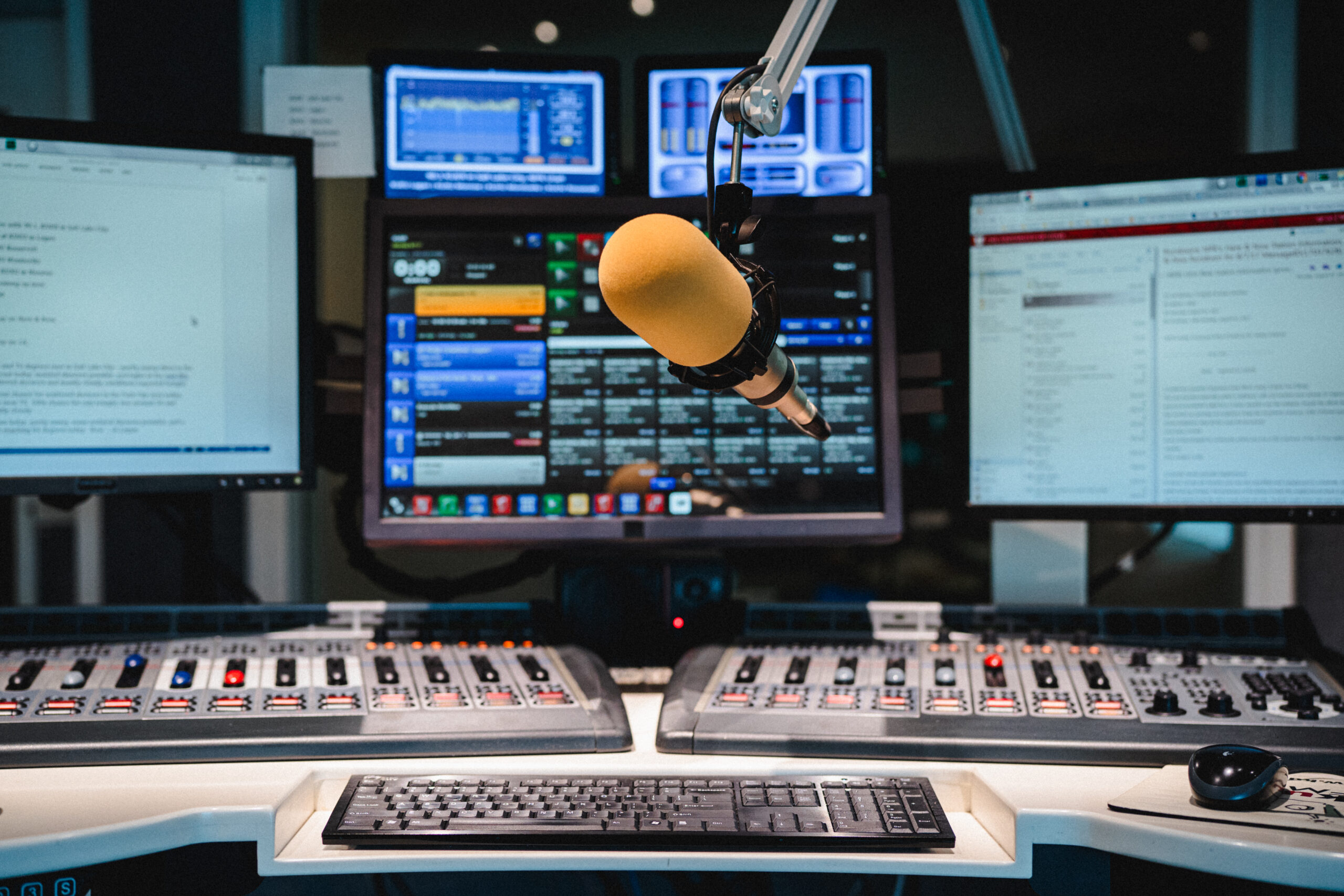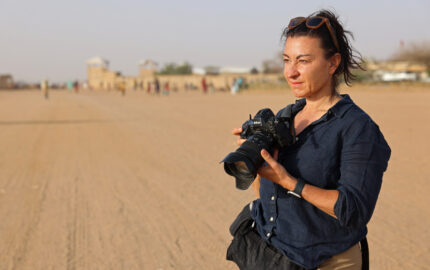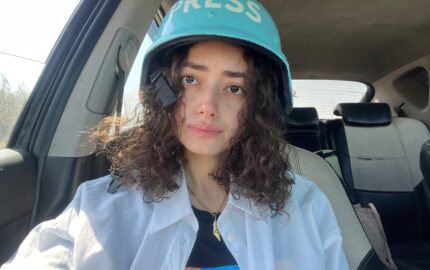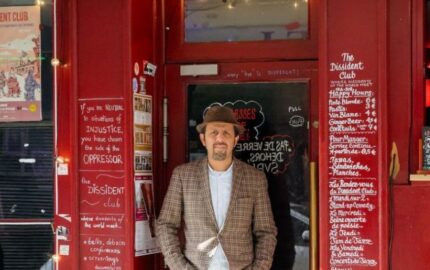Bilingual radio stations have long been a place of community for the Latino diaspora in the United States. Now, it’s the forefront of Utah’s newest public radio experiment.
The first Spanish-language radio waves in the United States were broadcast in the American Southwest in the 1920s as a way to distribute news among farmworkers. But media historians credit the grassroots Chicano movement in the mid-to-late 20th century as the main force that galvanized public support for community public radio. Stations such as KBBF-FM in Santa Rosa and Radio Bilingüe in Fresno were run by the efforts of local volunteers. They developed culturally specific and educational programming with call-in shows like “Hora Médica” featuring guest health practitioners and daily news shows like “Noticiero Latino” that report on immigration, politics, and the environment.
When the KUUB 88.3 FM frequency opened up for sale last year, KUER and PBS Utah purchased it and announced a transformation of the channel to the state’s first bilingual radio station. The move was prompted by Utah’s changing demographics: It is the ninth fastest growing state and has more people identifying as multiracial. Hyperfocused on growing a young and diverse audience, Maria O’Mara, the executive director of PBS Utah and NPR affiliate KUER, is spearheading the effort. KUUB announced earlier this summer that the station hired Edgar Zuniga as its program director.
O’Mara and community advisory board members Jennifer Tarazon, Rossina Lake, and Claudia Loayza spoke to Nieman Reports about the station’s bilingual endeavor. The conversation has been edited for length and clarity.
What is your personal connection with this KUUB 88.3 FM project?
Tarazon: I'm first-generation American, from East LA, originally. English was not my first language. So I learned a lot of English from watching Sesame Street and from watching Mister Rogers’ Neighborhood. One of the first things [Maria and I] talked about was in Utah, Hispanics are the largest ethnic population. But we're not treated as such all the time. We're always “the forgotten,” until the time comes for voting … or supporting a cause. And so that was a conversation that we had from the very beginning.
Loayza: I grew up as a back seat listener, that's a term I've coined, because my parents actually [listened to] a lot of public radio and NPR stories [to] improve their English. There are examples that I can recall, from formative parts of my teenage life, where there would be a story on — for example, about a young individual battling with their drug addiction or battling with something in their life that was a challenge. As we were listening to [the story] in the car, my mom would stop before we went into the grocery store and ask, ‘What did you think about that?’ That really inspired me to be curious and to continue to find ways to listen to public radio, not just to know what was going on in the world, but to be able to have thoughtful conversations with others. It helped me feel more confident stepping into spaces I had never stepped into before as a first-generation Latina and American here. I hope that the work that we're doing is able to reach more young Latinas and Latinos of all generations so we can continue to make those connections and feel represented in the media.
Where did the idea for a bilingual station come from?
O’Mara: I would say we started thinking very seriously about a streaming service for a Latino population in 2021. We worked with Studio To Be, that's Joaquin Alvarado’s Bay Area organization [a creative media and consulting agency that supports journalists in strategy]. He helped us figure out how to do listening tours, even during Covid. And Ogden, I think, is second only to West Valley City in terms of the percentage of [the] population that's Hispanic. We heard from [people we talked to there] that it would be nice if you sounded more like us. That was the beginning conversation. It was with that backdrop, when we heard about KCPW's intent to sell the 88.3 frequency, that we started to think about rather than creating a streaming service, could we get a stronger foothold if we purchased a radio station?
Our hunch was confirmed, not very long after, when Nielsen released some data about radio still being the preferred platform for Hispanic audiences, that radio would be a nice firm footing that we could build on. Because I do anticipate that this station will have a strong digital component, probably with an app, because we want to make it easy and streamable. But it has a foundational foothold in radio.
Why embark on this initiative now?
Tarazon: I was at a Latino leadership conference at the U.N. in December, and the Latino donor collaborative was there. They have some really interesting statistics. We know the Hispanic community is just growing leaps and bounds. So where does that leave us? In the next five years? Who is that audience? Who is that media and communication going to be tailored for? If you're not working on this now, you're just going to be so behind in five years. Coming from L.A., the Hispanic committee is so integrated into the community. It's not like you have to work at integrating it. It's already there. That 13-year-old right now that we're talking about, that was me, 30 years ago, that was the first first-generation in L.A. — now Utah is maybe a generation or two behind that. But that's where we're headed. So, how do we prepare for that?
Loayza: I do a lot of volunteer work with some of our youth and scholars, students that are aspiring for higher ed and different workforce and career paths. I think it's so critical that when we talk about this evolving stage of Utah, that we realize that a lot of times the growth that we're seeing internally, is also coming externally. The 18-and-younger population, like 30% of those students are Hispanic or Latino.
I think Utah is really special because we have strong bilingual programs in our elementary schools. We actually just heard from one of our universities last week, they're opening up a program specifically for Spanish speakers to go on a degree-seeking pathway. So they'll be able to receive a degree in Spanish, if that is their choice. I think that there are so many different ways that institutions are showing that investment. I do hope that the media pieces that representation across radio, and then also TV — I know we have Univision and Telemundo here locally. But I think for myself, being first-generation Latina, there's a rising population of students that are multicultural, bilingual, bicultural, in a lot of ways, and are trying to figure out where they fit within the society that we're crafting together, if it's Utah culture, if it's Latino culture, if it's bilingual culture.
I just think there's so many ways that we're adding vibrancy to the state and having a platform like bilingual radio that can inspire more representation broadly, I think it’s going to be really special. So it'll draw a lot of folks to spaces where they can feel like they have a voice and then also gather folks [around] one.
There are many news orgs that are contracting and you're expanding right now. Can you talk a little bit about the funding model?
O’Mara: KUER and now KUUB — their licenses are all held by the University of Utah. They provided us with new funds for the purchase of [the KUUB] license … and will continue to give all three stations [KUER-2, KUER-3, and KUER-4] a lot of support for what we do. So that's really foundational to our success.
In terms of other funding, which is going to be really critical to our success, we've seen a real interest by the Corporation for Public Broadcasting in multilingual efforts. The foundations that currently support PBS and NPR in Utah had a big event on May 3 to announce the new station to that group, and we believe that they will be excited by the new prospect of a station that serves a different audience to the standards of public media that they've supported for a very long time.
We've actually already heard from some of our current business sponsors who have said they would really like their on-air acknowledgments to be both in English and Spanish. Even before the [bilingual] station was a thing, we were already getting that amount of interest. I think this will open doors for us to work with new organizations, new major donors, folks who wouldn't have considered us who are specifically interested in a bilingual station. So, I'm very optimistic about our financial support.
What kind of journalism and audience goals do you have for KUUB in the coming months?
O’Mara: It's a big question. We are going to bring coverage of Spanish-speaking communities to our original news station. I believe there will be partnership opportunities, then that will bring journalism into the new station potentially. PBS Utah has been known for decades as being the place where if you've got a political debate or the governor's monthly news conference, which happens at the PBS studios, we always translate it into Spanish. So, there'll be a public affairs component as well. But we do know from other markets and other research that music tends to be an entryway into public broadcasting. I think that we're keeping a very open mind about music in the format, but also journalism and public affairs. It could go lots of different ways.
Lake: We have a bicultural, bilingual community that is constantly evolving and growing. But within this community, we have different generations, and that is always the challenge. You have immigrants; you have people that have been born and raised here that are as much Latino as they are American and there's no difference for them. You have a lot of newcomers, especially with the influx after Covid-19. There's been a lot of changes in our market, but identifying those unique differences within the culture and language that connect them — how do we create an ecosystem that represents them and unites them?
What kind of response have you gotten about what types of programming music and talent people want to see? Can you give an example or two or maybe another radio station that has done it before that you're modeling after or what people have referenced?
Lake: Something that we are finding is from our Gen X listeners — they like international news. They want more of those updates, because they are already listeners. So they just want to make sure that there's more of that content. A lot of the stations that are locally in the market are probably not serving a community that is constantly growing — the South American community. One of the things that we heard [is they] would like to hear more of that music that connects us.
O’Mara: The millennial group said [they wanted] content that would help them feel connected as a community, because the community is not monolithic.
I'll be candid with you, I had some warnings from people in legacy broadcasting who cautioned me, saying: ‘You're gonna have a really hard time. This population is so different, and they don't all get along, and they won't like the same things. So you won't be able to capture the things that will bring them together.’
But in doing this market research, I actually absolutely believe that we will. Language is one thing that would bring this community together, but not just language. It's also going to be these topics of music, food, and family traditions.
I think that one of the big points that will differentiate us is that we will move sort of seamlessly and without apology between Spanish and English, so that it doesn't have to be direct translations throughout. We believe that we want the radio station to sound like language spoken in the homes of our audience, where different generations may [speak] more Spanish or more English — depending on who you're talking to — but it sort of all mixes together in this very comfortable way. That's what we'll be seeking to have.
There are other radio stations across the country that are bilingual already. What advice have you gotten from them?
O’Mara: Everything in media feels very iterative. It's, “we're growing, we're changing along with our audience,” right? Their habits are changing. Our response to them needs to change, if we're going to do it right. So I have no doubt that what we feel is working right now, or what we think we should do right now, may not be what is going to be working a year or five years [in the future]. There has to be a sense that we can keep up, we're gonna fail, we're gonna fail fast, and we get back up and try something else.
Correction: The headline for an earlier version of this article mistakenly referred to KUER as Utah Public Radio, a different public radio station in Logan, Utah.



